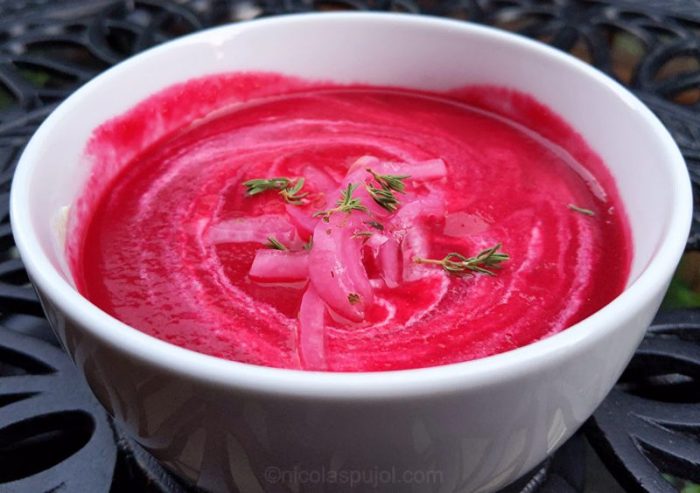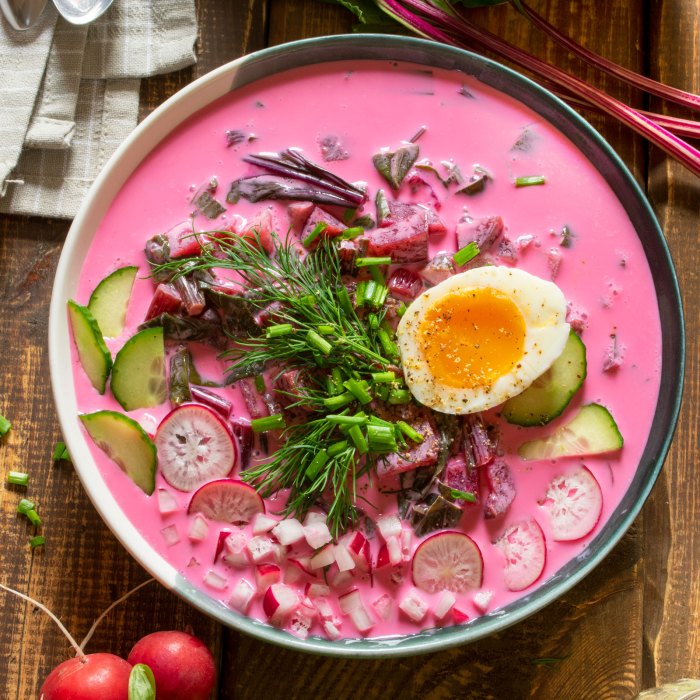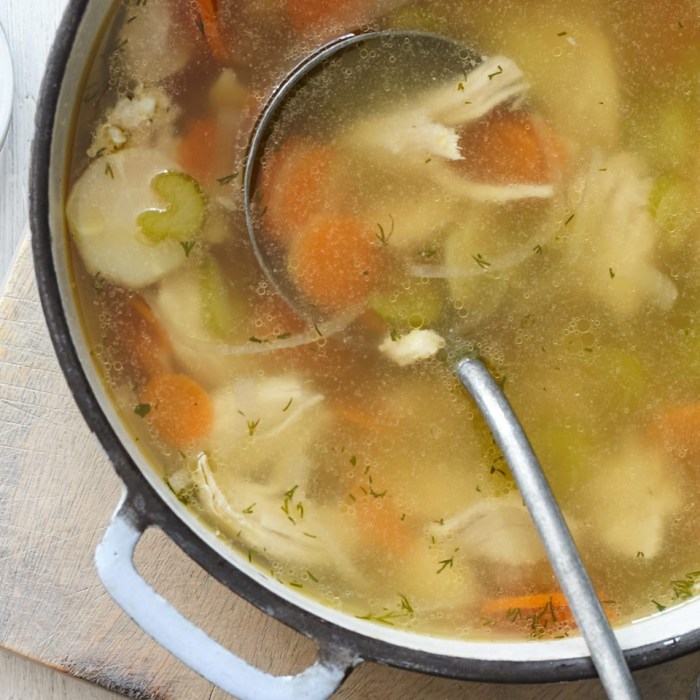Red Beet Soup: A Culinary Journey Through Flavors and Cultures: Red Beet Soup Recipe

Source: nicolaspujol.com
Red beet soup recipe – Red beet soup, a vibrant and versatile dish, boasts a rich history and diverse culinary interpretations. From the hearty classic of Eastern Europe to the lighter Mediterranean variations and the spicy Asian-inspired twists, this soup offers a spectrum of flavors and textures. This exploration delves into the various recipes, cooking techniques, serving suggestions, ingredient substitutions, and the fascinating cultural significance of this beloved soup.
Recipe Variations: A Trio of Beetroot Delights
Three distinct red beet soup recipes showcase the versatility of this humble root vegetable. Each recipe offers a unique flavor profile, reflecting the culinary traditions of different regions. The nutritional benefits of red beets, rich in nitrates, antioxidants, and fiber, are enhanced by the addition of various ingredients in each variation.
| Ingredient | Eastern European | Mediterranean | Asian-Inspired |
|---|---|---|---|
| Beets | 2 lbs, cooked | 1 lb, roasted | 1 lb, cooked |
| Broth | 6 cups beef broth | 4 cups vegetable broth | 4 cups chicken broth |
| Vegetables | 1 onion, 2 carrots, 2 celery stalks | 1 zucchini, 1 red bell pepper, 1 lemon | 1 red onion, 2 cloves garlic, ginger |
| Seasoning | Salt, pepper, dill, sour cream | Salt, pepper, oregano, olive oil | Soy sauce, sesame oil, chili garlic sauce |
The Eastern European version emphasizes a savory, earthy flavor profile, achieved through the use of beef broth, root vegetables, and dill. The Mediterranean variation offers a lighter, brighter taste with the sweetness of roasted beets, the freshness of zucchini and bell pepper, and the tang of lemon. The Asian-inspired recipe delivers a bold, spicy kick, incorporating soy sauce, sesame oil, and chili garlic sauce to complement the earthy beets.
The nutritional content varies slightly across the recipes. While all versions provide essential vitamins and minerals from the beets, the added ingredients contribute additional nutrients. For example, the Mediterranean recipe benefits from the vitamin C in the bell pepper, while the Asian-inspired version gains extra antioxidants from ginger.
Cooking Methods and Techniques: Mastering the Beetroot Soup
The preparation of red beet soup involves various techniques depending on the chosen recipe. Each method contributes to the unique character and flavor profile of the final dish.
Classic Eastern European Method
- Sauté diced onions, carrots, and celery until softened.
- Add cooked beets (peeled and diced), broth, and seasonings.
- Simmer for 20 minutes, allowing the flavors to meld.
- Blend until smooth (or partially for a chunkier texture).
- Serve hot, garnished with sour cream and fresh dill.
Mediterranean Beet Roasting

Source: polonist.com
Roasting beets enhances their natural sweetness and creates a richer flavor. Preheat oven to 400°F (200°C). Wrap beets in foil and roast for 45-60 minutes, or until tender when pierced with a fork. Allow to cool slightly before peeling and dicing.
Fresh vs. Pre-cooked Beets
Using fresh beets requires more preparation time, including peeling and cooking or roasting, but offers superior flavor and texture. Pre-cooked beets are convenient but might compromise the overall taste and nutritional value.
Asian-Inspired Cooking Stages
Visual representation: The soup’s journey begins with vibrant red onions and garlic sautéing in fragrant sesame oil. The addition of ginger creates a warm, golden hue. The beets’ deep crimson color then merges with the broth, deepening the soup’s overall richness. Finally, a swirl of chili garlic sauce adds a fiery red accent.
A vibrant red beet soup recipe often features earthy beets, tangy vinegar, and warming spices. For more diverse options beyond this delicious recipe, you might explore a wider range of recipes for soups , discovering new flavor combinations and techniques. Returning to our red beet soup, consider adding a dollop of crème fraîche for a luxurious finish.
Serving Suggestions and Accompaniments: Elevating the Beetroot Experience
The presentation and accompaniments significantly impact the overall dining experience. Carefully chosen garnishes and side dishes can enhance the flavors and textures of the red beet soup.
- Garnish with a dollop of crème fraîche and fresh herbs (dill, parsley).
- Serve with crusty bread for dipping.
- Pair with a side salad of mixed greens and a light vinaigrette.
Accompaniments can either complement or contrast the soup’s flavors. Crusty bread absorbs the soup’s deliciousness, while a contrasting salad provides a refreshing counterpoint to the earthy beetroot.
A beautiful table setting might include deep crimson napkins, coordinating placemats, and elegant white or cream-colored tableware. The vibrant color of the soup will be beautifully showcased against this neutral backdrop.
Ingredient Substitutions and Adaptations: Catering to Diverse Needs
Adapting the recipe to suit different dietary needs and preferences is straightforward. Substituting ingredients allows for creativity and accommodates individual tastes.
Ingredient Alternatives, Red beet soup recipe
- Beets: While beets are essential, parsnips or carrots can partially substitute for a milder flavor.
- Broth: Vegetable broth easily replaces beef or chicken broth for vegetarian/vegan options.
- Sour Cream (Eastern European): Plain yogurt or coconut cream provides a creamy texture without dairy.
For vegan adaptations, replace dairy products with plant-based alternatives. Gluten-free diets are easily accommodated by ensuring the bread used is gluten-free. To make a larger batch for freezing, double or triple the recipe, allow it to cool completely, and store in airtight containers for up to three months. Reheat gently on the stovetop or in the microwave.
History and Cultural Significance: A Beetroot Timeline
Red beet soup holds a significant place in culinary history, evolving over centuries and becoming a staple in various cultures. Its symbolic meaning varies across different regions and traditions.
Timeline:
- Ancient Times: Beets were cultivated in the Mediterranean region.
- Middle Ages: Beets gained popularity in Europe.
- 19th-20th Centuries: Red beet soup became a common dish in Eastern European countries, particularly Russia and Ukraine.
- Present Day: The soup enjoys global popularity, with regional variations emerging worldwide.
In some cultures, red beets symbolize vitality and good health due to their vibrant color and nutritional value. In others, they hold specific significance during holidays or special occasions.
General Inquiries
Can I use frozen beets in this recipe?
Yes, frozen beets can be used, but thaw them completely and drain well before using to avoid a watery soup.
How long can I store leftover red beet soup?
Store leftover soup in an airtight container in the refrigerator for up to 3-4 days.
What can I do if my red beet soup is too sour?
Add a pinch of sugar or a spoonful of cream or sour cream to balance the acidity.
Is red beet soup good for you?
Yes, beets are rich in nitrates, antioxidants, and fiber, contributing to various health benefits.


